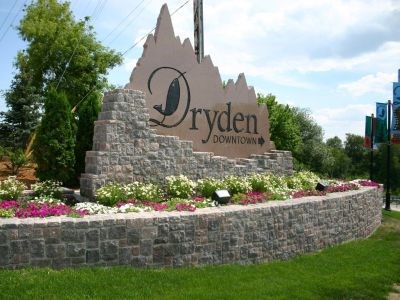DRYDEN – During the Sept. 26 council meeting in Dryden, the Traffic By-law committee present a report detailing objectives to modernize the Parking and Traffic By-law.
City Staffer, Tanner Pecarski, outlines in his report the several changes for the council to consider.
- Addition of excessive idling regulation
- Increase the set fines for safety-related issues related to emergencies
- Update the by-law to introduce politically correct terminology
- Update road names, such as removing Colonization Ave South and North, and replacing them with Boozhoo Avenue and Memorial Avenue
- Update road names to ensure consistency throughout the by-law (Highway 594 vs. Duke Street, etc.)
- Including in the by-law Highway Traffic Act authority to tow vehicles that violate the by-law
- Removal of the word “boulevard” and replace it with “highway right-of-way”, effectively prohibiting parking on a highway right of way
- Amended listing of Stop Signs and Yield Signs at intersections, to replace yield signs with stop signs at intersections at the direction of the Public Works department
Although Percarski highlights all eight issues in the council meeting, it was issue number seven and eight that was discussed at length by the council.
Council Norm Bush raised the question to Building and Planning Board on how the board determined these areas needed the updated signage.
Blake Pool, manager of the Public Works department, answered that the main consensus was from public complaints about intersections that don’t abide by the right-of-way rule when approaching yield signs or intersections that don’t have signage in place.
“We are trying to get rid of the yield signs,” said Pool. “People are tending to go through them more, and [we want to] replace them with stop signs within the city. But we also have a few intersections that are not controlled by signage, so we are trying to fill in those gaps as well. There are a few other areas in the city where we’re looking at changing some of the signage there from yield signs to stop signs and make the city constant with stop signs.”
Proposed stop sign additions are located at the following intersections:
- Elizabeth and Arthur Street
- Morison and Arthur Street
- Morison and Philip Street
- St. Charles and Rourke
- Rourke and Anderson
- Elvis and Milanese Place
- Wilde St and Sandy Lane
- Elvis and Sandy Lane
- Taylor Street and St. Charles Drive
Proposed yield signs that are to be replaced with stop signs are located at the following intersections:
- Humphrey and Wilde
- Morison and Wilde
- Humphrey and Wilson – North and South Sides
- Morison and Wilson – North and South Sides
- Humphrey and St. Charles
- Morison and St. Charles- North and South Sides
- Duke Street and Rourke
- Wilde St. and Taylor Street
Councillor Bush acknowledges that some of these intersections don’t receive a lot of traffic before asking Pool if these additions and replacements of the signage are necessary according to the municipal traffic law which Pool responds, “it is something we should do legally.”
Pool refers to Rourke Street and Duke Street (Highway 594) stating that “these ones should have stop signs, and probably should have had stop sign in the by-laws in the first place. They don’t have to be three-way are four-way stop signs, but there should be a stop sign coming from one direction to the other.”
Pool said that he isn’t a fan of putting up stop signs, but in his opinion, the addition of these stop signs won’t slow down traffic, they will clarify who has the right-of-way when they approach these intersections.
Mayor Greg Wilson asked Pecarski to clarify the wording in the by-law that restricts parking on the shoulder of the highway which the city considers a boulevard.
Pecarski refers to his report which states, “the definition of “boulevard” was written in a way that did not clearly describe that persons cannot park on a highway right of way. Proposed is a change to clearly define a highway-right-of way, which would allow for effective enforcement.
After receiving the report, the council moved to add the proposal to the Oct. agenda for consideration.
